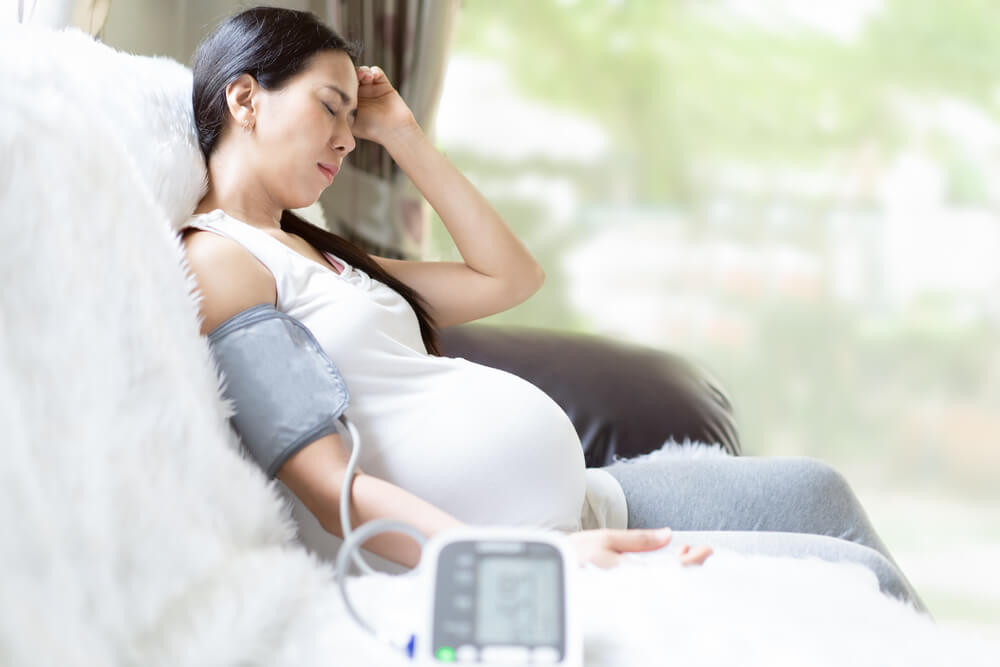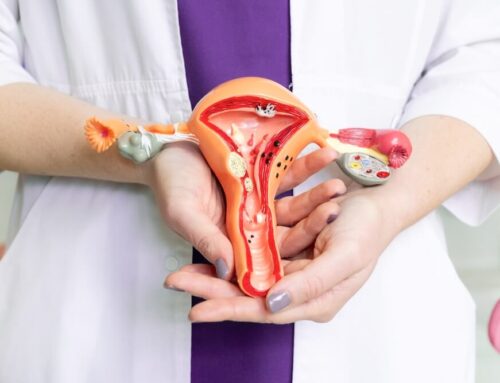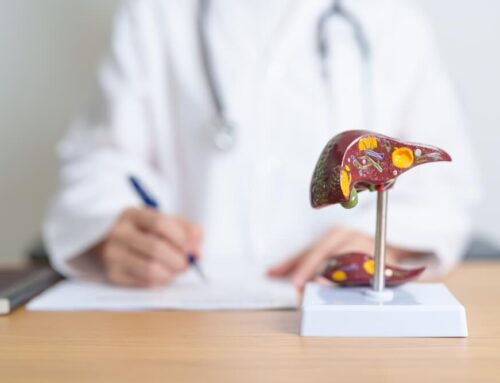Gestational Hypertension vs. Preeclampsia
Preeclampsia occurs when a woman develops high blood pressure suddenly in their pregnancy, and ketones, or proteins, are present in urine. This medical condition can happen right after birth or as early as twenty weeks into a pregnancy. Preeclampsia is a serious condition that can also affect the liver, heart, kidneys, and brain in the mother and affect the birth weight and maturity of a fetus. Preeclampsia also increases the risk of stroke, blood clots, hemorrhaging, and more. Gestational hypertension is a condition that may increase your risk of developing preeclampsia. Let’s discuss the difference between preeclampsia and gestational hypertension.
Gestational Hypertension Symptoms
Gestational hypertension occurs during pregnancy. Gestational hypertension induction occurs with elevated blood pressure without ketones present in urine nor alternative organ damage. Many women diagnosed with gestational hypertension, up to twenty-five percent, can develop preeclampsia. Other than high blood pressure, which is blood pressure higher than 140/90 mmHg, gestational hypertension symptoms include the following:
- Sensitivity to light
- Headaches
- Nausea
- Vomiting
- Confusion
- Changes in vision
- Shortness of breath
- Swelling in the legs
Gestational hypertension pathophysiology is often unknown, but as long as symptoms do not progress into preeclampsia, maternal and fetal outcomes are usually normal. However, gestational hypertension may lead to chronic hypertension later in life. If you are pregnant and are experiencing gestational hypertension symptoms, contact your healthcare provider right away. Further testing of your gestational hypertension symptoms, including urine tests and bloodwork, may be necessary to help your doctor monitor your health and risk of developing preeclampsia during or after childbirth.

Why is Monitoring Blood Pressure During Pregnancy Important?
Because your blood pressure can increase towards the end of your pregnancy, you will have to visit your doctor for more appointments in your third trimester. During pregnancy, high blood pressure makes it more difficult for your placenta to get enough blood. This can slow your baby’s growth, leading to premature or low birth weight, and limit oxygen and nutrients your baby needs. Hypertension can additionally stress the heart, arteries, and eyes.
Monitoring blood pressure during pregnancy is important because of these factors and the effects of hypertension on both a mother and fetus. Ideally, blood pressure sits between 90/60 mm Hg and 120/80 mm Hg. The first number is called systolic pressure, or the pressure your heart puts on your arteries while it pumps blood, while the second is called diastolic pressure, or the constant level of pressure on your arteries.
When blood pressure reaches a level of 140/90 mm Hg, it is considered high. Gestational hypertension induction is when your blood pressure is over 140 / 90 mm Hg when measured twice, at least 4 hours apart. The diagnosis comes 20 weeks into pregnancy and can occur in women who previously had normal blood pressure.
What Puts Me at Risk?
Though a gestational hypertension diagnosis does not always lead to preeclampsia, it is helpful to know your risks of gestational hypertension vs preeclampsia. Some risks include a family history of preeclampsia, older age, and abnormalities of the placenta in past pregnancies. Gestational hypertension pathophysiology is often unknown unless a clear underlying adrenal or renal disease is the culprit for high blood pressure. Though there is a difference between preeclampsia and gestational hypertension, the major risk factors for developing either condition remain the same:
- High blood pressure before pregnancy
- Diabetes diagnosis before pregnancy
- Previous gestational hypertension
- Previous preeclampsia
- Carrying multiples, such as twins or triplets
- Health history of Lupus
- An underlying disease of the kidneys
- Antiphospholipid syndrome
Severe Symptoms
Sometimes, patients have no symptoms of high blood pressure, and heightened blood pressure levels are first discovered during a prenatal exam. This is part of what makes attending prenatal appointments so crucial to your health and the health of your baby. When high blood pressure is detected or hypertension is suspected, your doctor will conduct more tests such as those mentioned above. Sometimes in a urinalysis, there may not be protein present in the urine, but other abnormalities in labs and symptoms can include the following:
- Impaired function of the liver
- Low blood platelet count
- Issues with kidney function
- Fluid in the lungs or pulmonary edema
- Changes in vision
- Pain in the upper right abdomen or liver
- Severe headaches that do not resolve on their own
These abnormal lab results signify HELLP syndrome, or Hemolysis, Elevated Liver enzymes, and Low Platelet count, a severe form of preeclampsia. Preeclampsia is a dangerous and life-threatening complication of pregnancy. If you are experiencing any of these symptoms or feel unwell during your pregnancy, contact your doctor immediately and seek emergency care.
Reducing Risks
Gestational hypertension diagnosis often comes as a surprise to many women because symptoms are typically not noticeable, and much of the time, women previously had normal blood pressure levels. Gestational hypertension induction may seem to come on suddenly and may be worrisome, especially if the condition develops into preeclampsia. It is helpful to know that many women are diagnosed with these conditions, so you are not alone.
To help with lowering the risks of preeclampsia, your physician may prescribe baby aspirin. Losing weight pre-pregnancy can help to lower risks as well. To reduce the risks of a future stroke or coronary heart disease, women diagnosed with these conditions during pregnancy will need to have their cholesterol, blood pressure, and blood sugar levels closely monitored by their doctor and under control. Women diagnosed with gestational hypertension during pregnancy have to maintain a heart-healthy lifestyle, filled with a healthy diet of nutrient-rich whole foods and regular exercise.

Treatment
Ultimately, conditions like gestational hypertension and preeclampsia are treated with the delivery of the baby. If an expecting mother is diagnosed with these conditions after 37 weeks into their pregnancy, their doctor may recommend delivery at that time. If gestational hypertension or preeclampsia are detected earlier in your pregnancy, then the condition may be monitored closely by your physician.
Your OBGYN may prescribe an antihypertensive medication to treat blood pressure during and after delivery. In more severe cases, they may use magnesium sulfate, which prevents seizures. It is worth noting that there is currently no natural remedy to treat preeclampsia, and any treatment should be cleared by a medical professional.
Trogolo Obstetrics and Gynecology
Delivering a healthy baby all starts with choosing the right obstetrician. At Trogolo OBGYN, our gynecological and obstetrics teams are comprised of highly trained, skilled, and compassionate physicians you can trust for your care and the care of your baby. Our goal is to help you feel safe, heard, and empowered before, during, and after your pregnancy. We are here to help you navigate through routine care and any complications that may arise in your pregnancy, such as gestational hypertension vs. preeclampsia, and more.
Whether you are newly pregnant or are considering becoming pregnant, or you wish to transition your care, Trogolo OBGYN is here to help you through every step along the way. Give us a call or visit our website today to learn more about our practice and the services we offer. You deserve the utmost care and attention during this special time, and Trogolo is here to provide superior care. We look forward to hearing from you!





